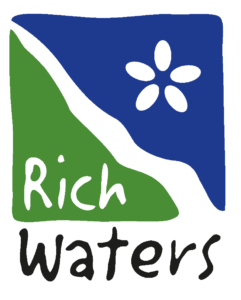Full version is available in Swedish
Executive Summary
The municipality of Katrineholm conducted a source tracking project for PFAS (per- and polyfluoroalkyl substances) to Lake Näsnaren, northwest of Katrineholm’s urban area, after elevated PFOS (perfluorooctane sulfonate) levels were detected in water and fish samples. The project’s goal was to identify and map the sources of PFAS pollution to facilitate targeted interventions and regulations for polluting activities. Sampling points were strategically selected based on historical data, industrial activities, and documented use of PFAS-containing firefighting foam. The main-funding of the project was within the LIFE IP Rich Waters project.
The project confirmed elevated PFAS levels in stormwater, with short-chain PFAS being predominant. These results highlight the need for continued sampling and monitoring to better understand seasonal variations and source dynamics. Additionally, the project strengthened internal municipal capabilities and raised awareness about PFAS among external stakeholders. Moving forward, the municipality will continue its work on PFAS through local efforts and international collaborations.
PFAS (per- and polyfluoroalkyl substances), are man-made chemicals that persist in the environment and can harm both ecosystems and human health. High levels of PFAS have been detected in Lake Näsnaren, prompting the municipality of Katrineholm to investigate where these pollutants are coming from. By analyzing water samples from various locations around the lake, the project was able to identify key areas contributing to the pollution.
The findings from this project will help authorities target specific sources of PFAS and implement measures to reduce their spread. Beyond identifying the pollution sources, the project has also increased public and political awareness of PFAS-related issues, paving the way for further action to protect water quality and public health.


